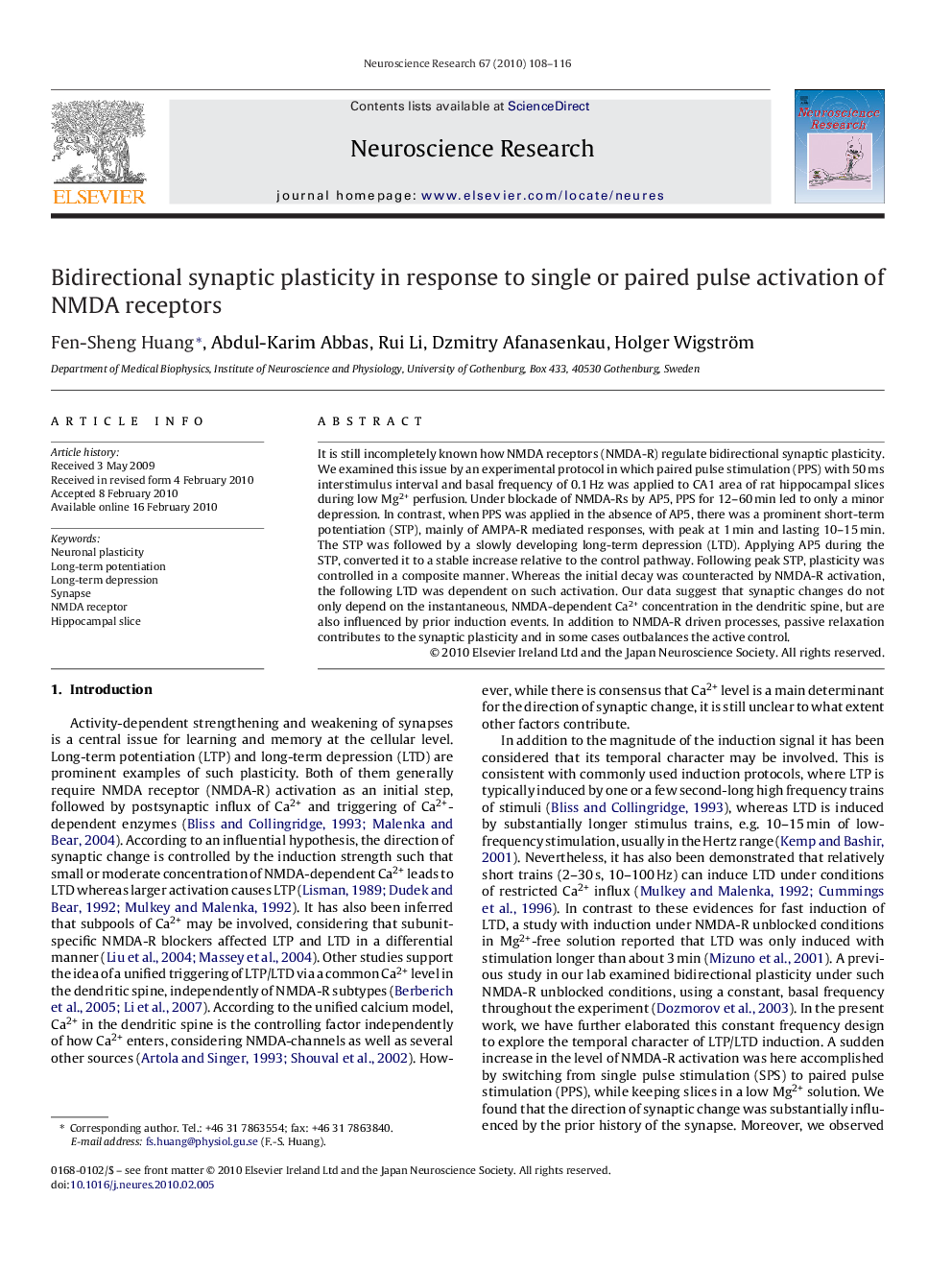| Article ID | Journal | Published Year | Pages | File Type |
|---|---|---|---|---|
| 4352239 | Neuroscience Research | 2010 | 9 Pages |
It is still incompletely known how NMDA receptors (NMDA-R) regulate bidirectional synaptic plasticity. We examined this issue by an experimental protocol in which paired pulse stimulation (PPS) with 50 ms interstimulus interval and basal frequency of 0.1 Hz was applied to CA1 area of rat hippocampal slices during low Mg2+ perfusion. Under blockade of NMDA-Rs by AP5, PPS for 12–60 min led to only a minor depression. In contrast, when PPS was applied in the absence of AP5, there was a prominent short-term potentiation (STP), mainly of AMPA-R mediated responses, with peak at 1 min and lasting 10–15 min. The STP was followed by a slowly developing long-term depression (LTD). Applying AP5 during the STP, converted it to a stable increase relative to the control pathway. Following peak STP, plasticity was controlled in a composite manner. Whereas the initial decay was counteracted by NMDA-R activation, the following LTD was dependent on such activation. Our data suggest that synaptic changes do not only depend on the instantaneous, NMDA-dependent Ca2+ concentration in the dendritic spine, but are also influenced by prior induction events. In addition to NMDA-R driven processes, passive relaxation contributes to the synaptic plasticity and in some cases outbalances the active control.
